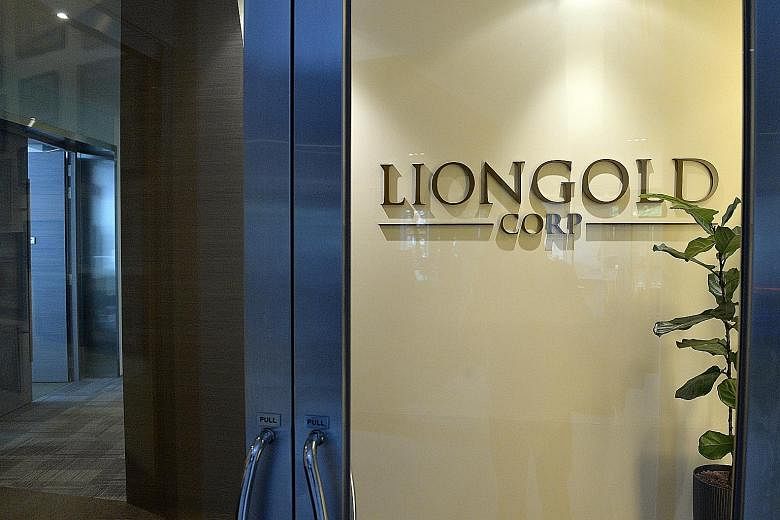The Singapore Exchange (SGX) often stands accused of failing to act fast enoughto query companies hit by unusual trading activities, and accepting standard replies without trying to probe further.
To fend off such accusations, the SGX upped the ante last year, with a measure to issue a "trade with caution" (TWC) notification to remind investors to be careful when a company fails to come up with a satisfactory explanation when queried.
That was supposed to serve as a warning that the trading characteristics of a company's stock could be caused by market forces other than its corporate developments.
But the observation of this columnist is that such a notification should be used sparingly. Otherwise, it could lose its effectiveness.
The lack of reaction from the market to the fairly large number of TWCs issued has served only to reinforce this columnist's observation that the warnings have fallen largely on deaf ears.
Take, for example, Sino Construction - a loss-making S-chip in the construction and civil engineering sector - since renamed as MMP Resources.
Its share price stayed at a gravity-defying level last year, despite getting TWC labels slapped on it twice - in April and September.
The party came to an abrupt end only seven months ago when its share price halved in a single trading session, after it announced it was expecting a loss for last year and requested a month-long extension to release its financial results.
Looking back, this columnist can only wonder how many traders took the two TWC warnings issued by the SGX seriously and hopped off Sino Construction before it crashed.
Wielding the TWC red flag can sometimes be a tad awkward too.
The bourse operator found itself slapped with a TWC notification on July 2 after attracting a high turnover and a 5.62 per cent rise in share price the previous day.
It had said it was not aware of reasons behind the developments.
Such an action makes light of a weighty issue.
To put things in perspective, the TWC measure was introduced in the aftermath of the seemingly inexplicable crash of the trio - Asiasons Capital, Blumont Group and LionGold Corp - in October 2013, following their equally inexplicable rise which transformed them from penny stocks into counters worth billions of dollars.
That market calamity caused plenty of grief to retail investors as $8 billion in market value was wiped out in days.
Contra losses running to more than $100 million were also reported.
So let's face it, the TWC was not aimed at blue chips such as SGX, Jardine Cycle & Carriage or United Overseas Bank, all of which had been slapped with the label one time or another, but whose unusual trading activities could be explained in terms of broader market events, rather than specific corporate actions.
Rather, it is targeted at sudden price movements in illiquid counters which suddenly spring back to life after long hibernation.
Seen in this light, it is good to note that the SGX appears to have taken heed of the lessons learnt and come up with further refinements to the red flags it issues on trading activities that are out of the ordinary.
Last month, it took the unusual step of issuing a press release to urge investors to be cautious in dealing with shares of fuel trader CEFC, which it had earlier slapped with a TWC after its share price had skyrocketed by 16 times - from 2.5 cents to as high as 40.5 cents - in just one month.
SGX had noted that in July and August, as CEFC was doing a share placement issue, "buying volume was concentrated in a small number of offshore accounts".
Together, these accounts had made up more than 40 per cent of the total traded volume during the period, it added.
Prior to issuing the cautionary statement, it had also pressed CEFC for an updated shareholding list and this showed that the counter's shares were very tightly held.
Last week, the SGX issued a similar cautionary statement on healthcare service provider IHC whose share price, it noted, had stayed steady between 29 cents and 32 cents for the past five months, despite general market volatility.
It said: "SGX's review of the trades revealed that a handful of individuals who seemed to be connected to each other were trading IHC shares through various trading accounts among themselves."
The SGX also noted that the trades of these people had amounted to more than 60 per cent of the total traded volume of IHC shares in the past five months.
This columnist would like to laud SGX's decision to share the fruits
of its market surveillance efforts
on CEFC and IHC with the investing public.
This will enable them to make a better-informed decision on whether to invest, or stay invested, in the two counters.
Had similar steps been taken before the Asiasons, Blumont and LionGold stock fiasco, this might have prevented the grief and pain suffered by retail investors when these counters subsequently crashed.
Readers will recall that after the trio's plunge, United States stock trading firm Interactive Brokers accused eight of its clients of buying and selling large blocks of shares in the three counters "using the same accounts, often on the same day and at the same price to give the impression that the counters were actively traded".
Interactive Brokers also alleged that these clients, all of whom shared the same financial adviser, had accounted for the bulk of LionGold's and Asiasons' daily trades before they crashed.
Now, this columnist is not suggesting that there is any wrongdoing where the recent trading activities of CEFC and IHC shares are concerned.
But in the light of the cautionary messages put out by the SGX, surely traders should be asking themselves if there is any justification for them to be trading at such lofty levels?
That is how a caveat emptor stock regime is supposed to work: Buyers beware.



